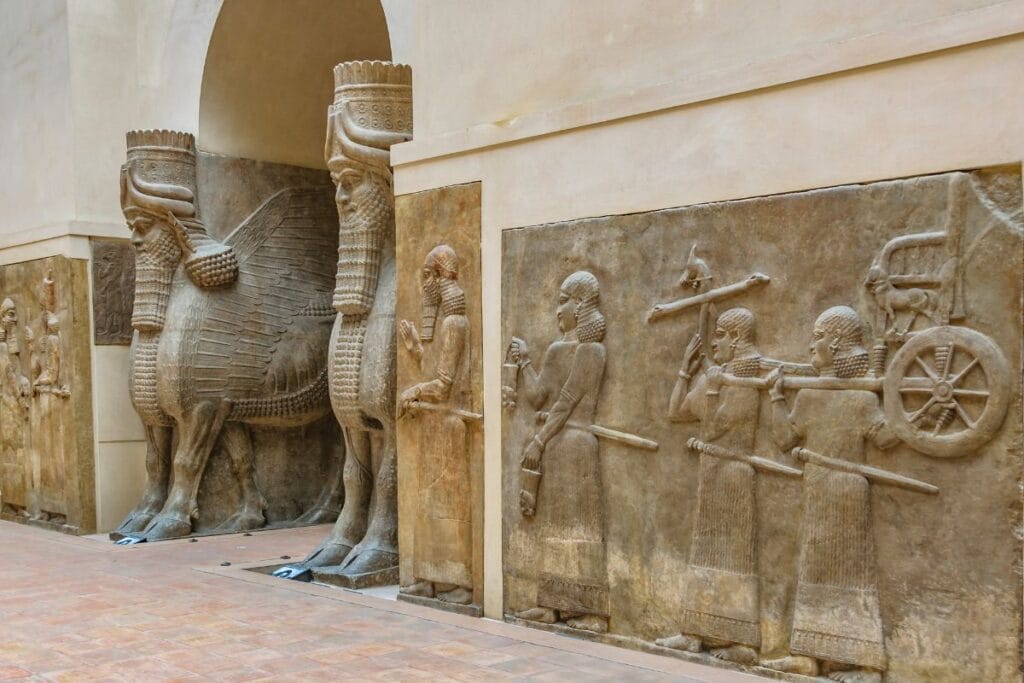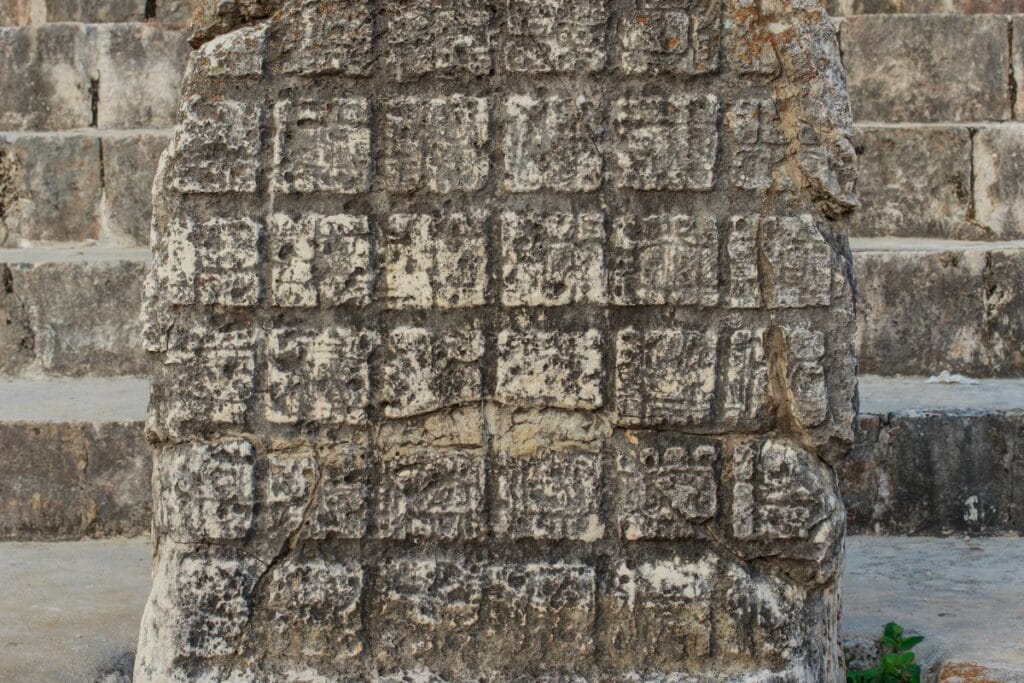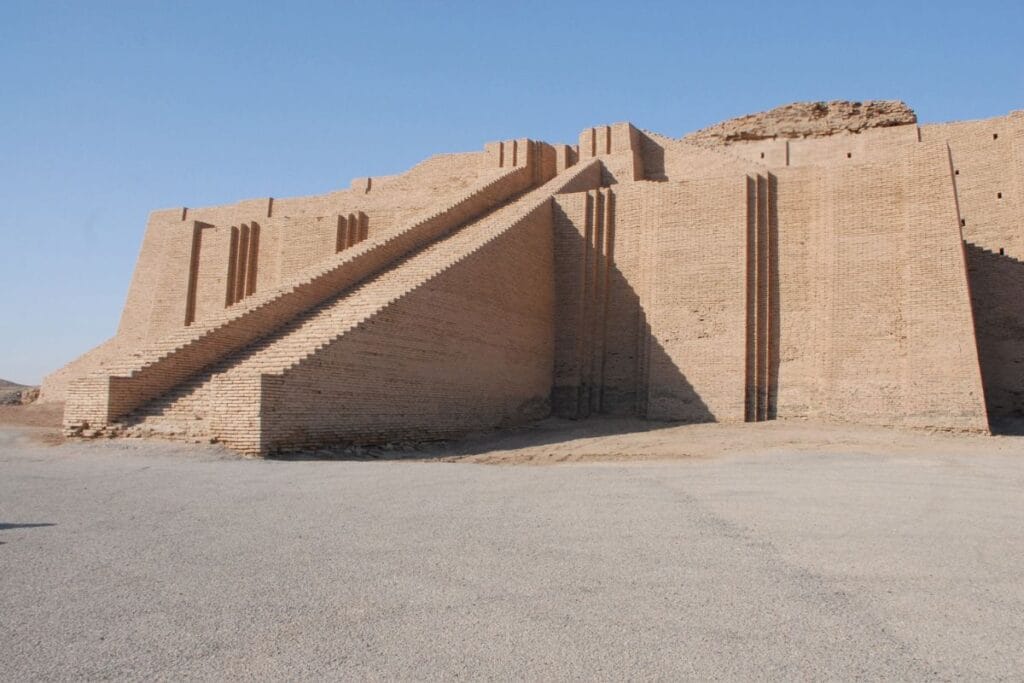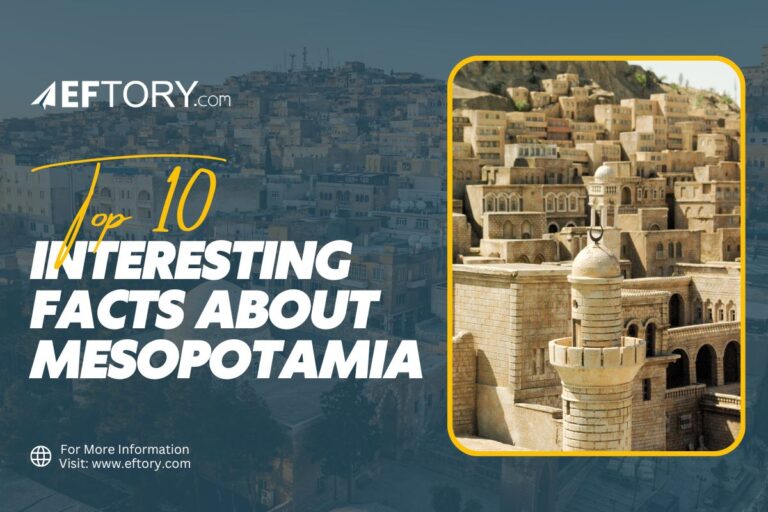Mesopotamia, often called the cradle of civilization, is full of amazing stories & facts. However, while some people may be familiar with facts like the invention of writing, there are some hidden realities about this ancient land that will surprise even history buffs.

10 Interesting Facts about Mesopotamia:
1. They Invented the First Writing System:
We’ve all heard that the Mesopotamians invented writing, but do you know why? It wasn’t to tell epic tales or record history at first. The very first cuneiform scripts were created for bookkeeping. Yes, you read that right, writing began as a way to keep track of transactions, trade, and goods like livestock or grain.
They needed a reliable system to show who owed what, and symbols pressed into clay tablets did the trick. So, before poetry or myths came along, Mesopotamian writing was more like a receipt you’d get at a grocery store.
2. They Used the Number 60 Everywhere:
Do you know why there are 60 seconds in a minute, 60 minutes in an hour, or why a circle has 360 degrees? Its credit goes to the Mesopotamians.
They developed a number system based on the number 60, which is called a sexagesimal system. This was very different from the base 10 system (decimal system) that we use today. They were obsessed with the number 60 and used it in everything from timekeeping to geometry. Even though we don’t use base 60 for most math today, it still plays a major role in how we measure time and angles.
3. They Were Advanced Astronomers:
While Egypt is well-known for its pyramids, the people of Mesopotamia were making big advances in astronomy. They made detailed maps of the stars and could predict when eclipses would happen, long before other civilizations started studying the sky. Mesopotamian astronomers identified star groups like Taurus, Scorpio, and Orion, which we still know today. They didn’t study the sky just for fun—astronomy was important for their religion, farming, and everyday life. Farmers used star charts to figure out the best times to plant and harvest crops.
4. Mesopotamian Cities Had Advanced Urban Planning:
Most ancient cities were a mix of buildings and streets with no real plan. But Mesopotamian cities were different. They had areas set aside for specific things, like temples, markets, homes, and palaces, similar to how cities today have different zones. Streets were carefully planned and laid out. Some cities even had drainage systems and public spaces, which were very advanced at that time. The way Mesopotamians organized their cities shows how advanced their society was.
Also Read: Five Historical Sites in Mesopotamia
5. Their Laws Were Carved in Stone:
You’ve probably heard of Hammurabi’s Code, one of the earliest sets of laws. But here’s something rare fact once these laws were written down, they were carved into stone. Hammurabi had his laws inscribed on large stone slabs called stelae, which were then placed in public places.
The laws weren’t just written down for display only, they were made nearly impossible to erase, which means they were permanent, both in a symbolic and real sense. If someone wanted to change a law, they would have to break the entire stone slab and carve it again. As you can imagine, this made it very difficult to change the laws, so they stayed the same for a long time.

6. Mesopotamians Were Advanced in Medicine:
People often think ancient medicine was basic, but Mesopotamian doctors were quite skilled. They wrote down more than 300 illnesses and their treatments on clay tablets, and some of these tablets still exist today. What’s really impressive is that they knew cleanliness was important for good health. They even suggested washing hands as part of medical care, which was very advanced for a civilization over 4,000 years ago. Mesopotamian doctors used herbs, performed surgeries, and even used magic in their treatments, combining science with superstition.
7. Their Libraries Were Filled With Thousands of Clay Tablets:
When you think of ancient libraries, you might think of scrolls or papers. However, in Mesopotamia, they used clay tablets to store information. Their libraries weren’t filled with books, but with these tablets, some as small as a smartphone. These tablets had all kinds of things written on them, like business records, stories, legal documents, and even school lessons. The most famous Mesopotamian library, the Library of Ashurbanipal, had over 30,000 clay tablets, and it is one of the largest and best-organized libraries of ancient times.
8. They Wrote Some of the Oldest Love Poems in History:
Mesopotamians wrote some of the first love poems in history. One of the most famous is a poem by the goddess Inanna for her lover, Dumuzi. These poems were full of passion and feelings, which shows that even back then, love and romance were important to people’s lives. These love poems give us a look at the more personal and emotional side of Mesopotamian culture.
9. They Built Huge Ziggurats Using Advanced Math:
The Mesopotamians often don’t get as much attention as the Egyptians with their pyramids, but they built amazing structures too. The most famous were ziggurats, huge stepped towers that were part of their temples. What’s interesting is how they managed to build these tall structures. They used advanced math to make sure each layer was stacked perfectly, so the ziggurat wouldn’t fall apart. Some of these buildings were over 150 feet tall, which was an incredible achievement at that time. This shows that Mesopotamians weren’t just good at trade or farming, they were also brilliant architects.

10. They Had an Early Version of a “Swimming Pool” for Rituals:
In the center of many Mesopotamian temples, archaeologists have found large, man-made pools.
Some people think these were used for religious cleansing, similar to an ancient swimming pool. These pools were often filled with water from rivers like the Tigris and Euphrates and used in ceremonies where priests would wash themselves before entering holy areas. The idea of ritual bathing in Mesopotamia came before similar practices in places like ancient Rome or India. This shows that for the Mesopotamians, water wasn’t just important for survival, it also had a deep spiritual meaning.
Learn more about Mesopotamia’s History on Wikipedia.
Reference Books From which I get this Information:
The Ancient Near East: History, Society and Economy” by Mario Liverani
“Mesopotamia: The Invention of the City” by Gwendolyn Leick






